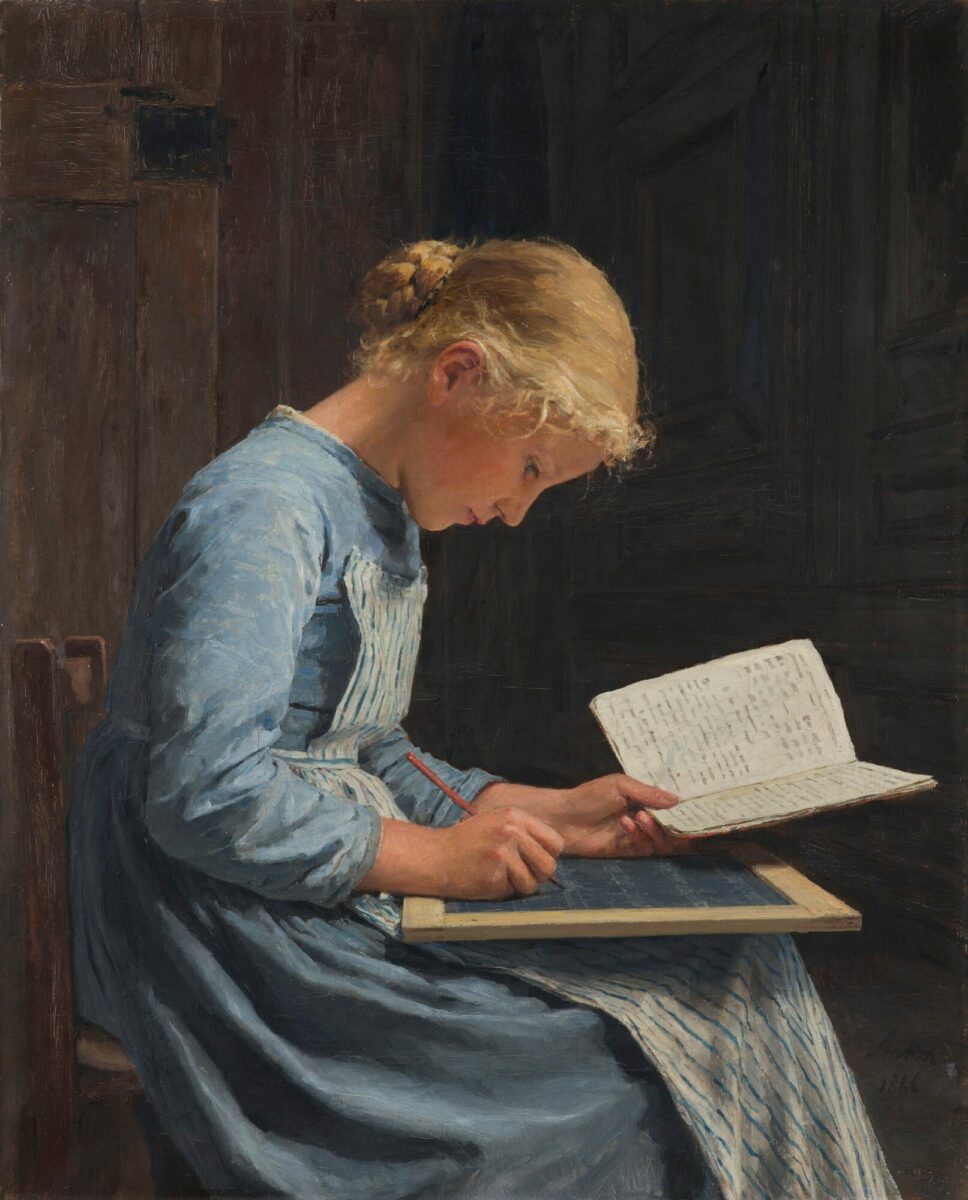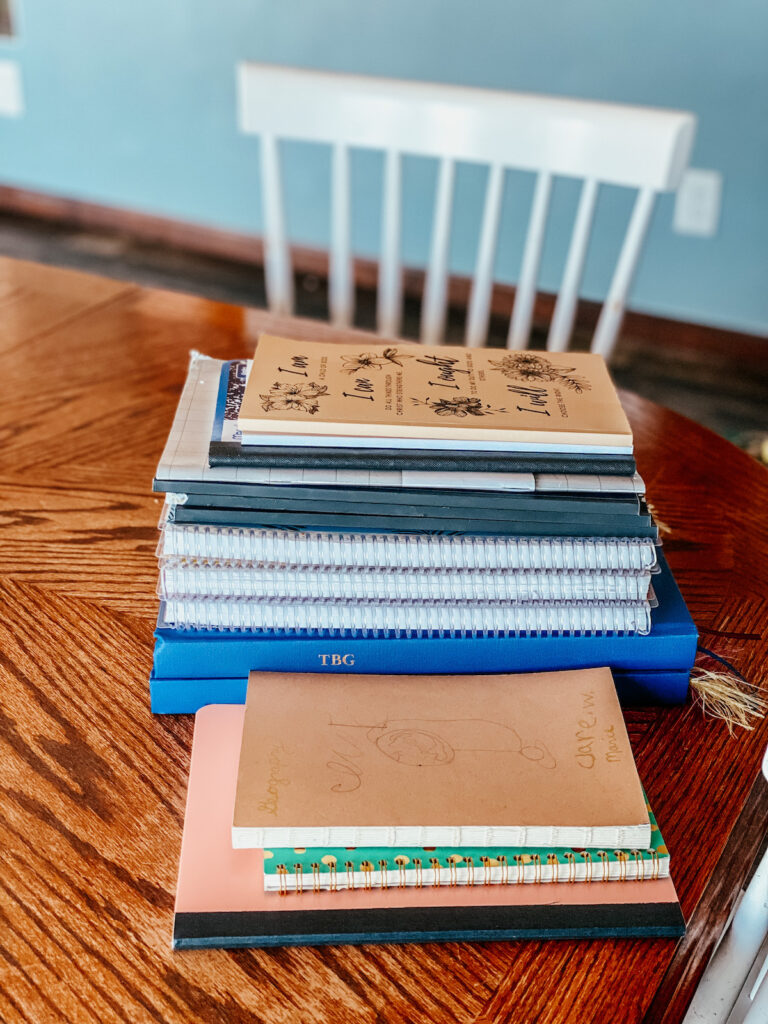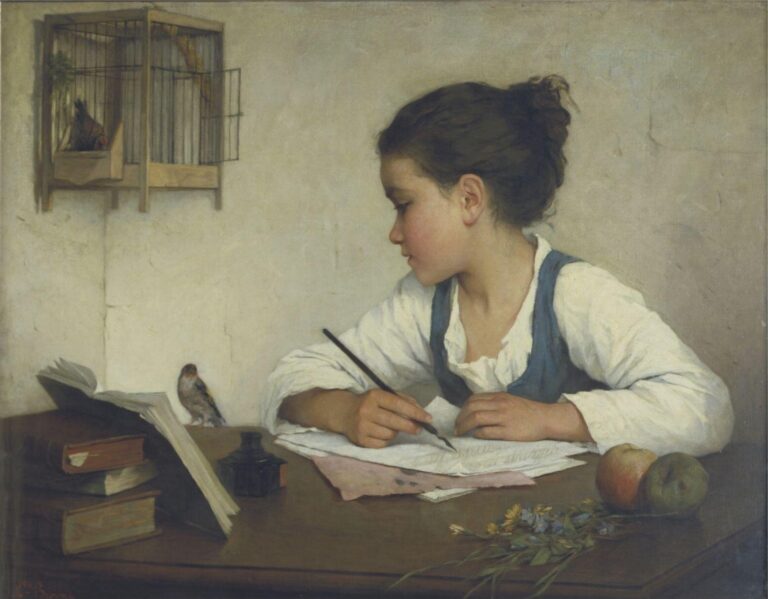Disclosure: Joyfully Domestic may earn a commission for purchases made after clicking links on this page. View our disclosure policy for details.
Copywork is one of the simplest yet most effective tools in a Charlotte Mason education. This simple practice helps children internalize the mechanics of great writing while also cultivating a love for beautiful language.
Far from busywork, copywork lays the foundation for strong handwriting, spelling, grammar, and composition skills. And without the need for endless worksheets or drills!

What is Copywork?
Copywork is the practice of carefully transcribing well-written passages from great literature, Scripture, poetry, or historical texts.
Through this process, children absorb proper sentence structure, punctuation, and vocabulary naturally, much like an apprentice learning from a master.
“The earliest practice in writing proper for children of seven or eight should be, not letter-writing or dictation, but transcription, slow and beautiful work, for which the New Handwriting is to be preferred, though perhaps some of the more ornate characters may be omitted with advantage.
Charlotte Mason, Home education p. 238
Transcription should be an introduction to spelling. Children should be encouraged to look at the word, see a picture of it with their eyes shut, and then write from memory.”
Why Copywork Works
Charlotte Mason believed in giving children the best models of writing rather than relying on fragmented exercises.
A few of the benefits of copywork include:
- Handwriting Development: Daily practice refines fine motor skills and letter formation.
- Spelling and Grammar Mastery: Seeing and writing correctly structured sentences ingrains proper language patterns.
- Attention to Detail: Copying passages with accuracy fosters careful observation and accuracy.
- Literary Appreciation: Exposure to rich, well-crafted language shapes a child’s own writing style over time.

How to Use Copywork in Your Homeschool
One important step in copywork is transcription, the process of taking a picture of the word in “the mind’s eye” and then replicating it without looking back at the word.
Charlotte Mason says: “Steps in Teaching. — Let the stroke be learned first; then the pothook; then the letters of which the pothook is an element––n, m, v, w, r, h, p, y; then o, and letters of which the curve is an element a, c, g, e, x, s, q; then looped and irregular letters––b, l, f, t, etc.
“One letter should be perfectly formed in a day, and the next day the same elemental forms repeated in another letter, until they become familiar. By-and-by copies, three or four of the letters they have learned grouped into a word––’man,’ ‘aunt’; the lesson to be the production of the written word once without a single fault in any letter.
“At this stage the chalk and blackboard are better than pen and paper, as it is well that the child should rub out and rub out until his own eye is satisfied with the word or letter he has written.” — Home Education p. 234
Copywork Lessons
Implementing copywork is simple and adaptable:
- Choosing Passages: Select excerpts from classic literature, Scripture, poetry, or historically significant passages/documents. Generally, we like to choose selections from what the children are already using for their lessons.
- Short and Focused Sessions: Young children may start with a single sentence, gradually increasing to longer passages as they grow. And keep the lessons short!
- Quality Over Quantity: Accuracy is more important than speed; encourage careful, thoughtful writing.
- Integrating with Other Subjects: Copywork can be drawn from history, science, or religious studies, reinforcing learning across disciplines.
Remember to keep the lessons short as per the recommendations of Miss Mason. “First, let the child accomplish something perfectly in every lesson—a stroke, a pothook, a letter. Let the writing lesson be short; it should not last more than five or ten minutes.” — Home Education, P. 233
And as they progress, more time may be added for the students. Generally, I keep lessons to about 5 minutes for my youngest children and move them up as they advance in forms.
“Not more than ten minutes or a quarter of an hour should be given to the early writing lessons. If they are longer the children get tired and slovenly.” – Home Education, P. 239

How Copywork Cultivates a Love for Beautiful Words
Copywork is not just about mechanics. It is also about exposure to great ideas and noble thoughts.
By copying passages from the best authors, children develop an ear for eloquence and a heart for truth and beauty in language. Over time, their own writing will reflect the richness of what they have copied.
By making copywork a regular part of your homeschool, you’ll be equipping your child with essential language skills while immersing them in the beauty of well-crafted words.
Charlotte Mason Language Arts Posts
Read more about our approach to language arts in our classical Charlotte Mason homeschool.
- The Art of Narration in a Classical Charlotte Mason Education
- Copywork: Simple Transcription in a Classical Charlotte Mason Education (this post)
- Dictation: Spelling + Grammar in Classical Charlotte Mason Education
- The Foundations of Language Arts in a Classical Charlotte Mason Education
Resources for the Mother-Teacher
- The Home Education series by Charlotte Mason
We use these notebooks for written narrations, dictation, and copywork. They are simple quality but with beautiful covers. I let my children pick which ones they love each year.
What stands out to you from these ideas?
I hope that you found this post helpful. And I’d love to hear what resonates most! Tell me what you’d add to this list and/or how you implement copywork lessons in your homeschool.





